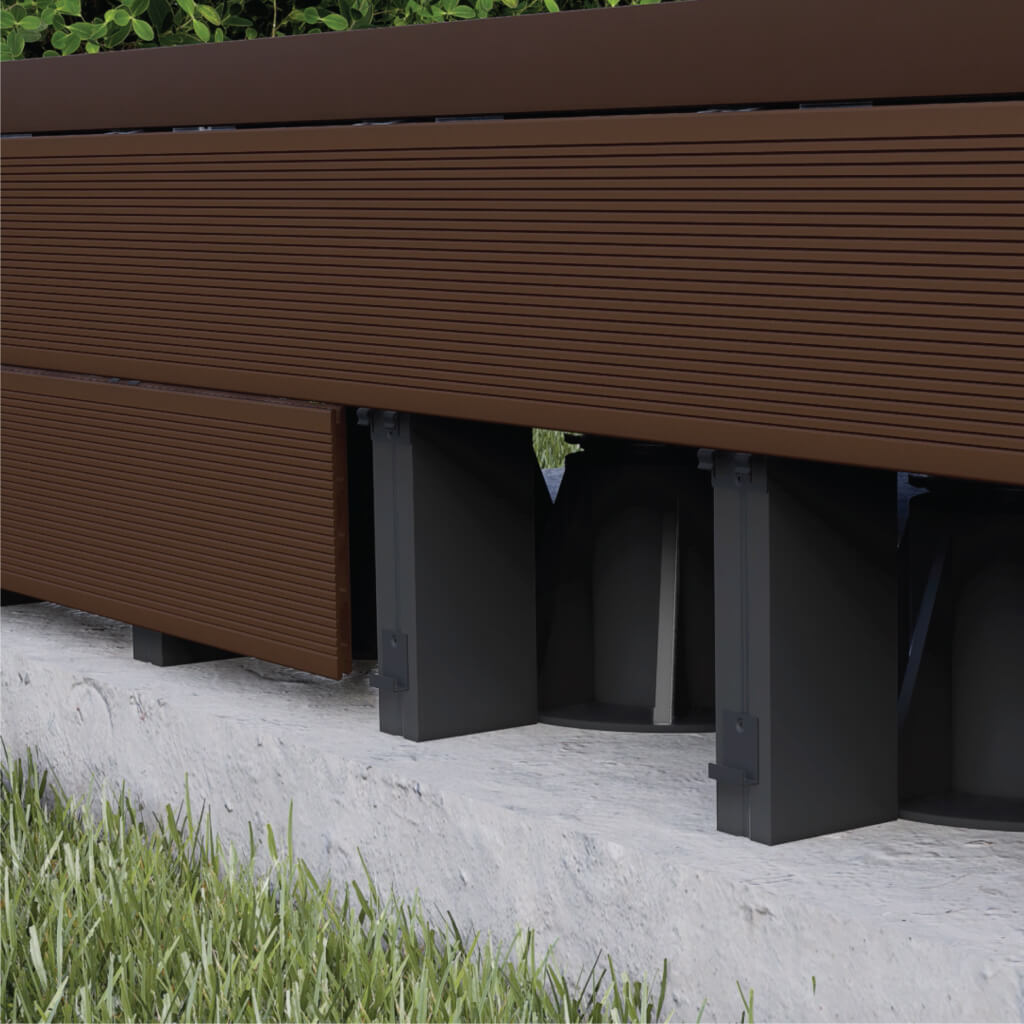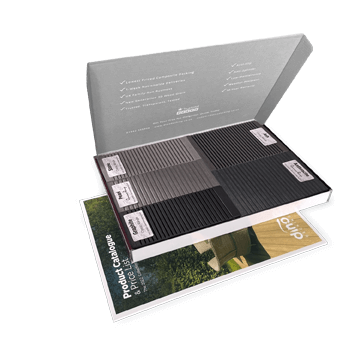How to Install Composite Decking
If you’ve ever wondered how to fit composite decking, you’re in the right place. In this guide, we’ll talk you through each step of the composite decking installation, including fitting decking frames and accessories. Whether you’re considering revamping your outdoor space with Dino’s premium composite decking solutions or are already in the process of planning your project, we’ve got you covered.
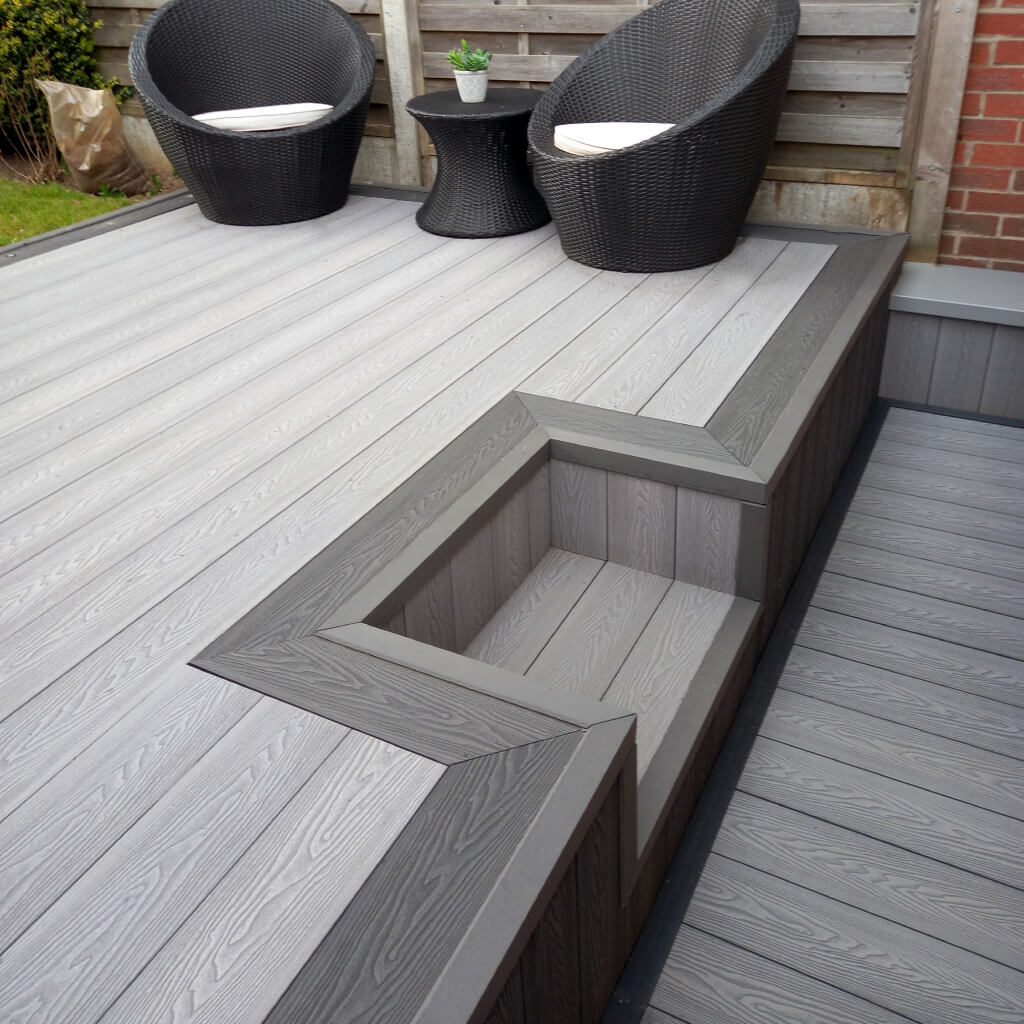
Each section informs you how to install composite decking, featuring a detailed video tutorial along with step-by-step images and accompanying text, providing a comprehensive resource for every aspect of the installation. From the composite battens to pedestals, to aluminium joists, and fixings, every element is meticulously covered to ensure clarity and ease of understanding.
Whether you’re a seasoned DIY enthusiast or embarking on your first decking project, equip yourself with the knowledge and confidence needed to achieve professional results while bringing your decking vision to life.
With our detailed instructions and visual aids, you can navigate each stage of the installation process with precision and efficiency, bringing your decking vision to life.
Not sure how much you need? Try our composite decking calculator.
Table of Contents
Installing Composite Decking
Installing composite decking can seem like a daunting task, especially if you haven’t done it before. The video below offers a complete view of the composite decking installation process from start to finish, giving you all the information you need to successfully fit your decking.
For a detailed step-by-step picture and text guide or individual video tutorials for each product installation, please refer to the sections below.
For a detailed step-by-step picture and text guide or individual video tutorials for each product installation, please refer to the sections below.
Requirements & Information
Tools Required
- PPE
- Tape measure
- Circular Saw
- Mitre saw
- 60 – 80 Tooth Blade
- Electric Drill
- Cordless screwdriver
- Spirit level
- Hammer
- Mallet
Installation Requirements
- Butt joints should be between 8mm and 12mm to allow the boards to expand and contract.
- Butt joints should be supported by two lengths of joist, one for each decking board.
- A fastener should be used at the end of each decking board, at a butt joint and not shared across two decking boards.
- 20mm should be left around the deck, next to solid structures
- Joist centres should be no more than 300mm.
- The base should be solid such as concrete or hardcore.
- The decking should slope at around 10mm per meter towards a drainage are to allow water to drain easily.
- Any composite product should not be directly screwed though, excluding joists.
- Composite joists should be predrilled.
- Only Dino Decking fasteners are compatible to be used with Dino Decking composite decking products.
FAQ
Do I need to hire a professional?
While hiring a professional fitter isn’t necessary for installing your composite decking, you can confidently tackle the task yourself by following these straightforward steps. Even without prior construction experience, you’ll find it manageable.
However, if any aspect of the installation process leaves you uncertain, it’s advisable to enlist a professional’s help to ensure safety and precision. Should you proceed with a DIY approach, remember to prioritize your safety by wearing appropriate protective gear.
What are joist centres?
For all projects, including domestic or residential ones, maintaining the correct joist centres at 300mm is crucial. This ensures structural integrity, preventing flexing or bowing that could damage the boards and pose safety risks. A smaller joist spacing results in stronger decking, capable of withstanding higher foot traffic.
What are butt Joints?
Is there a particular orientation or direction recommended for installing my decking?
The decking should slope at around 10mm per meter towards a drainage area to allow water to drain easily. Additionally, your decking should be laid perpendicular to or at a 45-degree angle to the joists in the subframe to ensure structural integrity.
Our reversible decking boards provide flexibility in installation. You can choose either side – one features a natural wood grain effect, while the other displays a modern ridged pattern. Whether you prefer a single style or a blend of both for various garden areas, the decision is entirely aesthetic.
Is planning permission required for constructing a composite deck?
How to Install Composite Decking with Hidden Fastener Fixings
By following these detailed instructions on how to install composite decking with hidden faster fixings, you’ll ensure a sturdy and professional installation of your decking using either the 3mm fixing clips or 6mm fixing clips.
-
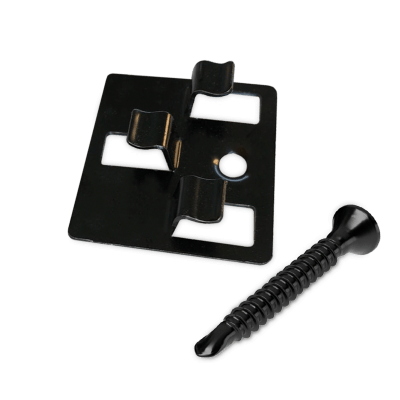 3mm Hidden Fasteners (100 Bag)£29.99inc VAT
3mm Hidden Fasteners (100 Bag)£29.99inc VAT
Per Box -
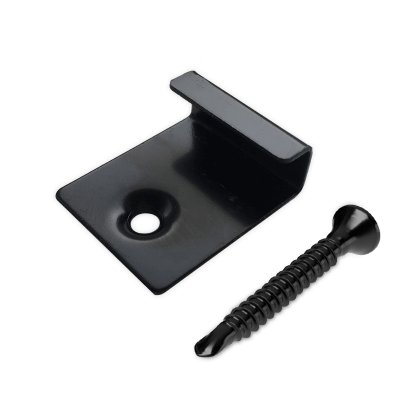 Hidden Starter Fasteners (100 Bag)£26.99inc VAT
Hidden Starter Fasteners (100 Bag)£26.99inc VAT
Per Box -
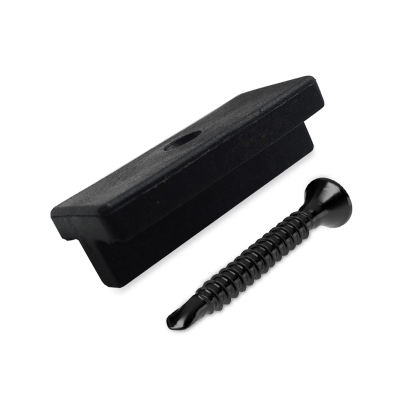 6mm Hidden Fasteners (100 Bag)£19.99inc VAT
6mm Hidden Fasteners (100 Bag)£19.99inc VAT
Per Box
To install your decking with the 3mm clips, follow these steps:
Step 1: Position the starter fixing clips
Begin by positioning a starter fixing clip on each of your joists, ensuring joists are spaced at 300mm intervals. If you’re using 6mm fixing clips, slide the 6mm clips down the length of the decking boards, meeting each joist spaced at 300mm intervals.
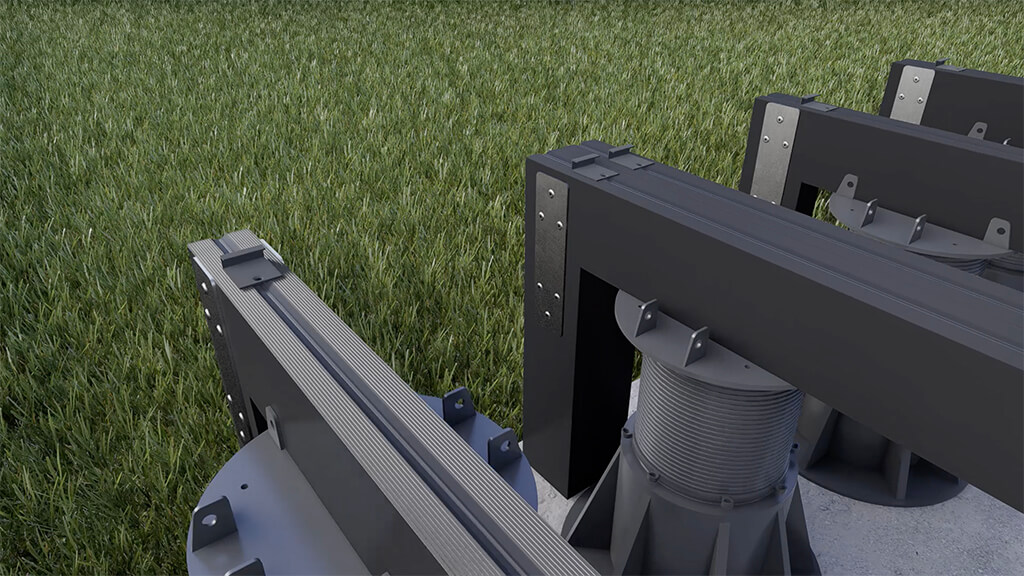
Step 2: Lay the first decking board
Place your first decking board onto the joists.
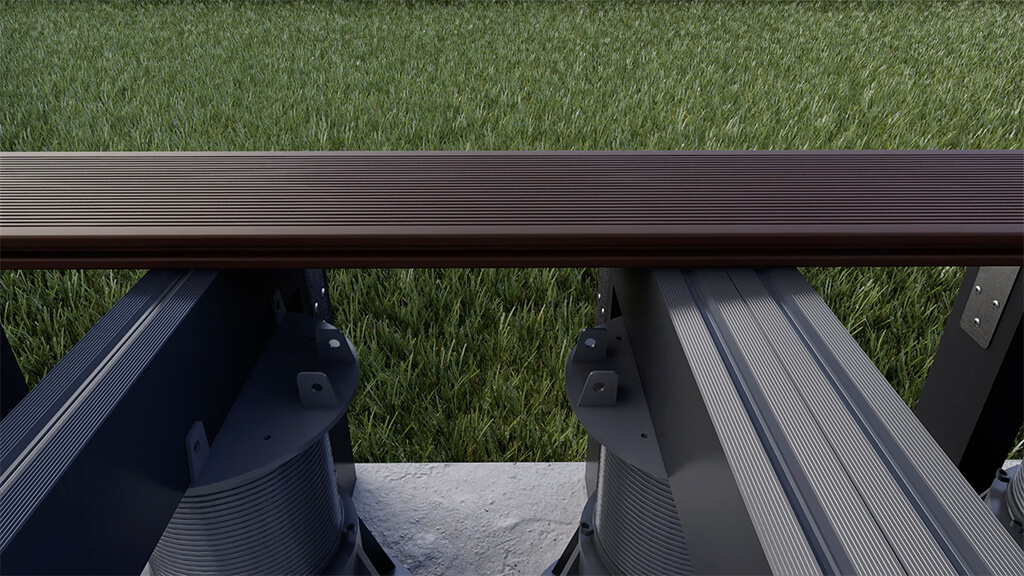
Step 3: Attach the hidden fixing clips
Attach a 3mm hidden fixing clip on the opposite side of the decking board, using screws to secure firmly in place. If you’re using 6mm clips, screw these into position to secure each decking board to the substructure below.
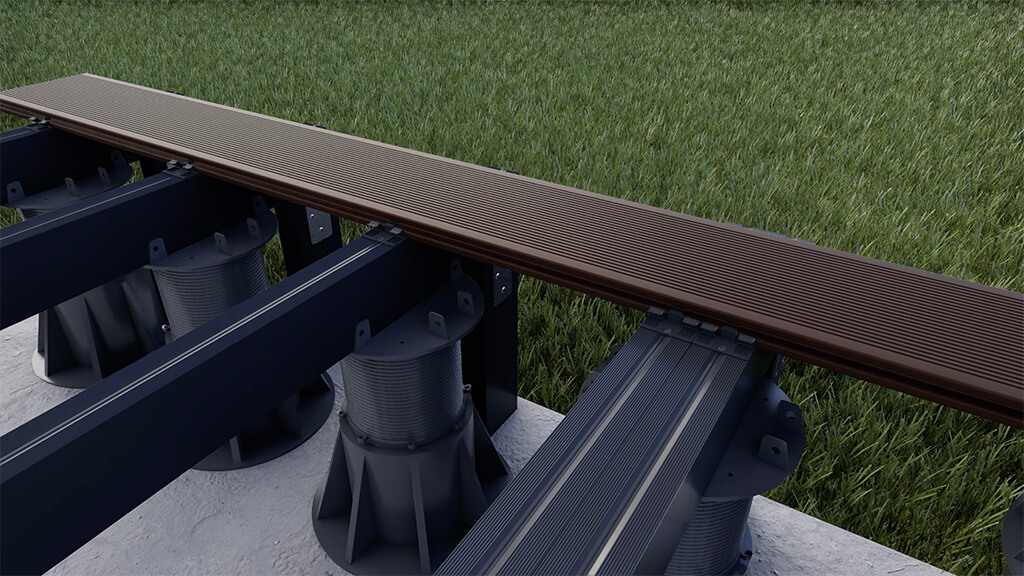
Step 4: Install the decking boards
Proceed to install the next decking board, repeating the process of placing the hidden fixing clip.
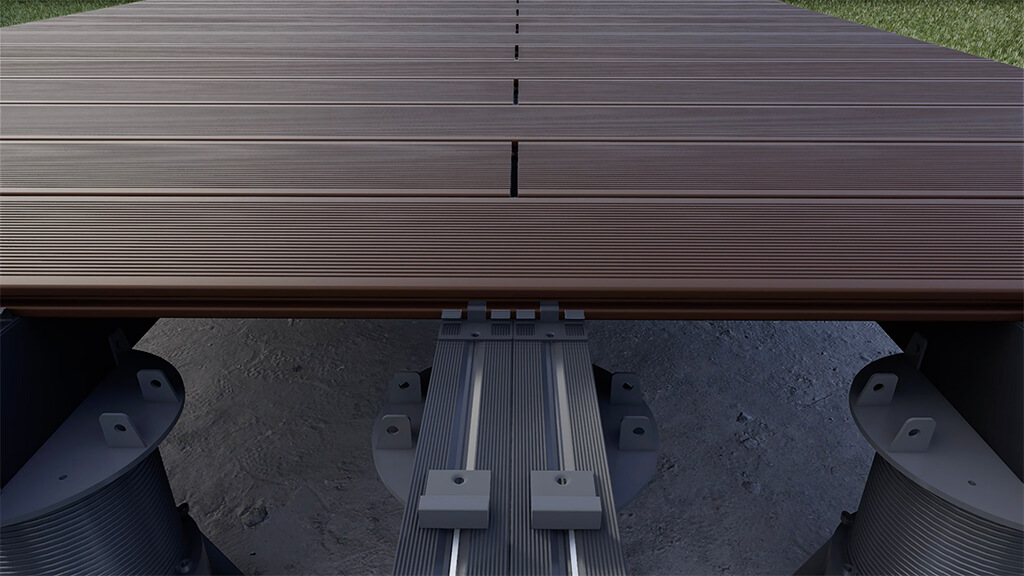
Step 5: Secure the final decking board
Continue this pattern until you reach the final board.
For the final board, install the starter fixing clips onto the joists and then slide the board into place securely.
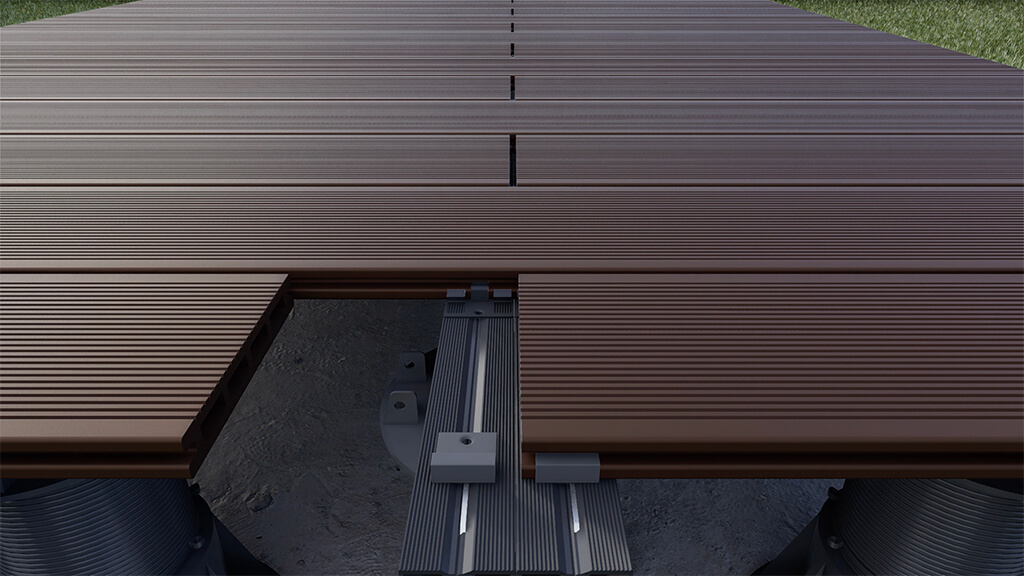
How to Install a Composite Decking Frame
Learn how to install a composite decking frame by utilising decking joists and fasteners, like composite battens or raised aluminium joists, to support adjustable plastic pedestals.
Composite Joist (Batten) Installation
A composite decking substructure can utilise 3-meter-long composite battens, each measuring 30mm in height and 50mm in width. These battens should be installed on a flat foundation or ground, as they may bend if raised. They need to be spaced 300mm apart to effectively support the decking boards. Fasten the decking boards to the battens using 3mm or 6mm screws to ensure a secure and stable installation.
-
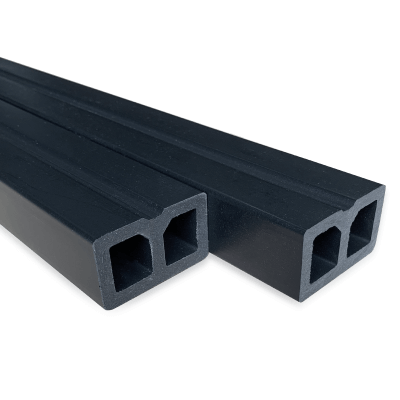 Low Profile Composite Decking Joist / Battens – 3m£8.99inc VAT
Low Profile Composite Decking Joist / Battens – 3m£8.99inc VAT
Per 3m (9ft 10") Lengths
Step 1: Create a proper slope for drainage
Proper Slope for Drainage: When laying the composite batten on the surface, it’s essential to create a slope of 10mm per meter towards a designated drainage area. This slope will allow water to flow easily and prevent pooling.
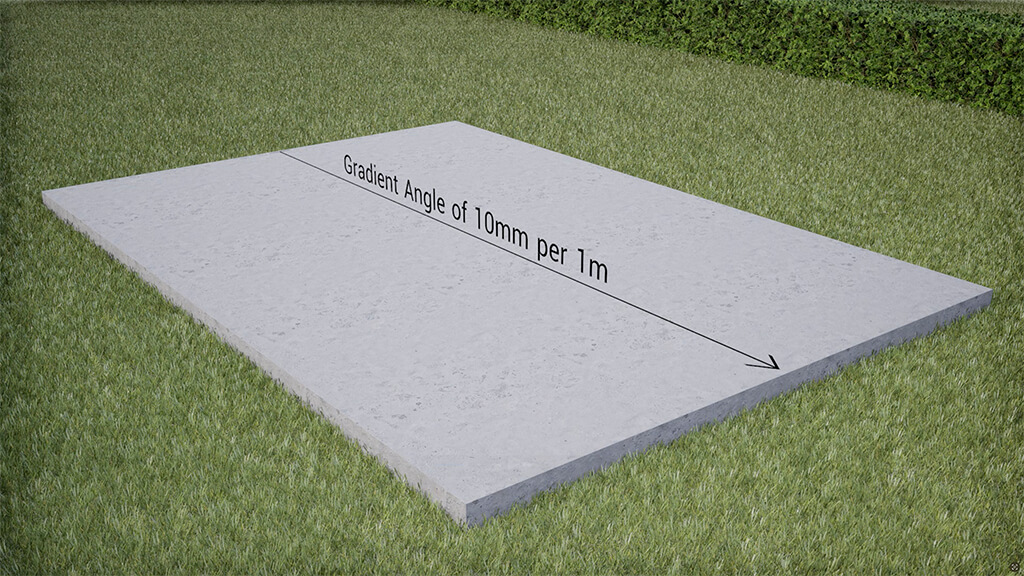
Step 2: Position the battens
Batten Placement: Lay the battens flat on the surface while ensuring that the centres of your joists are spaced at a maximum of 300mm apart. This spacing is crucial for providing adequate support for your decking.
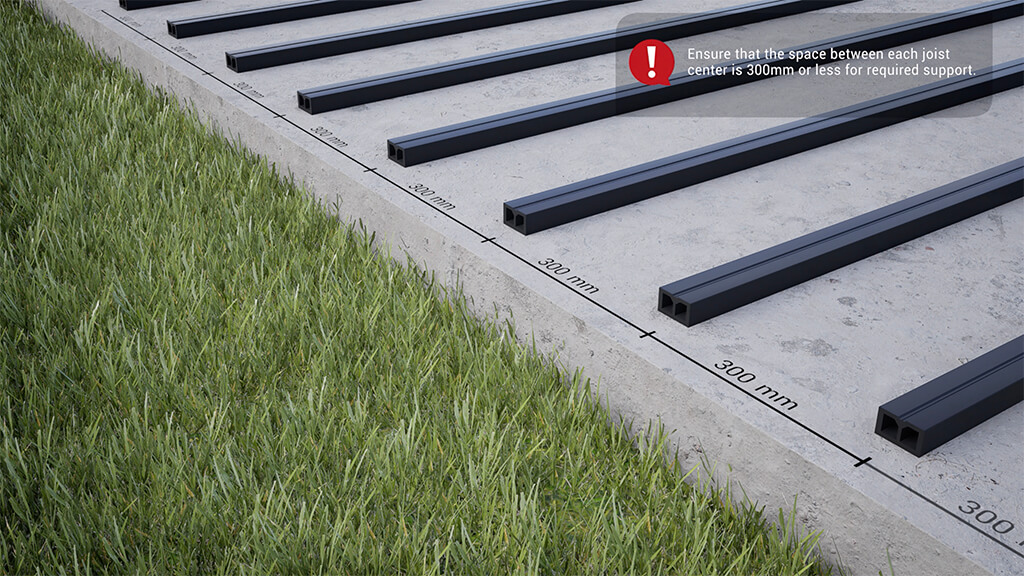
Adjustable Pedestals Installation
Installing adjustable pedestals correctly is essential to ensure your composite decking is secure and properly supported. Please note that composite battens or joists should be used on a flat surface when a deck is not required to be raised.
-
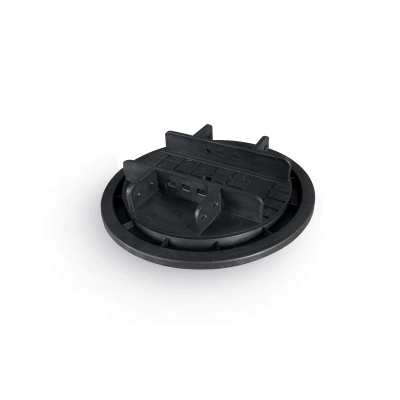 Fixed Pedestal Support 15mm£2.79inc VAT
Fixed Pedestal Support 15mm£2.79inc VAT
Per Unit -
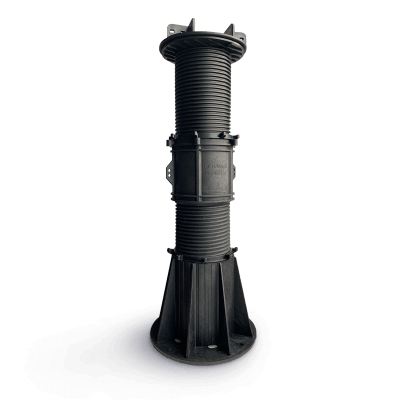 Adjustable Pedestal Supports 365-528mm£12.99inc VAT
Adjustable Pedestal Supports 365-528mm£12.99inc VAT
Per Unit -
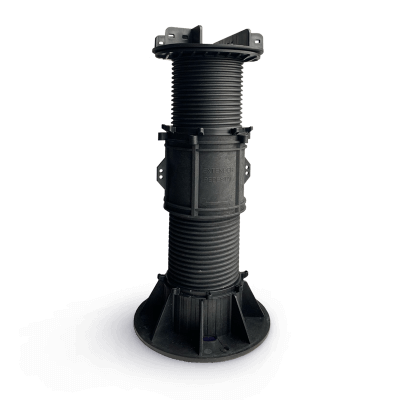 Adjustable Pedestal Supports 265-365mm£9.99inc VAT
Adjustable Pedestal Supports 265-365mm£9.99inc VAT
Per Unit -
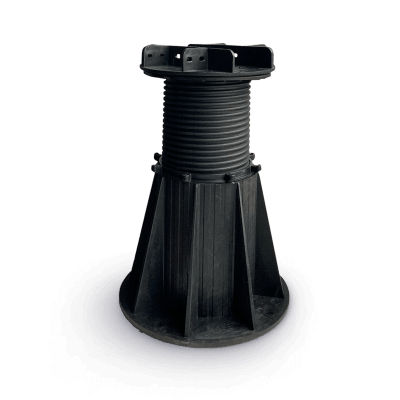 Adjustable Pedestal Supports 165-265mm£7.99inc VAT
Adjustable Pedestal Supports 165-265mm£7.99inc VAT
Per Unit -
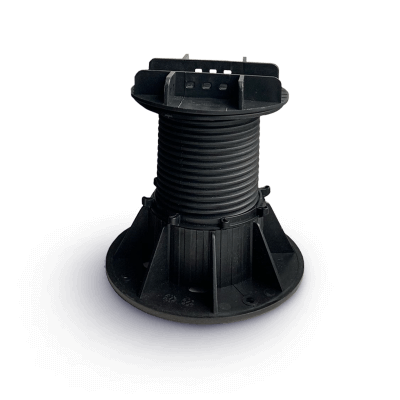 Adjustable Pedestal Supports 137-165mm£6.99inc VAT
Adjustable Pedestal Supports 137-165mm£6.99inc VAT
Per Unit -
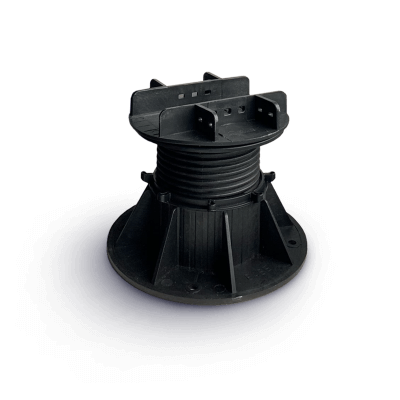 Adjustable Pedestal Supports 100-128mm£5.49inc VAT
Adjustable Pedestal Supports 100-128mm£5.49inc VAT
Per Unit -
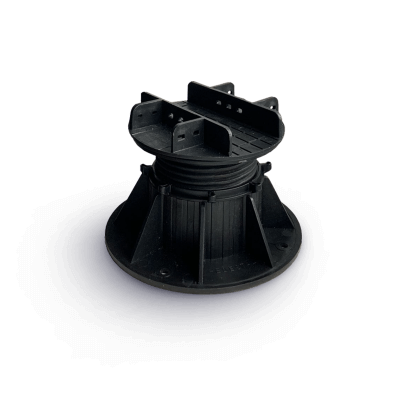 Adjustable Pedestal Supports 75-100mm£4.99inc VAT
Adjustable Pedestal Supports 75-100mm£4.99inc VAT
Per Unit -
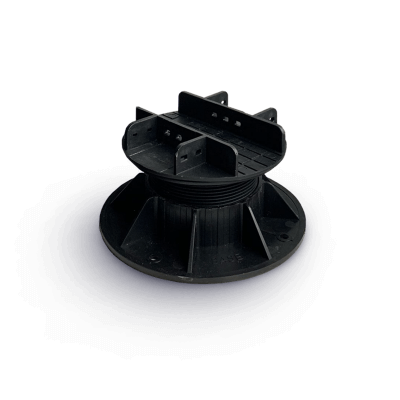 Adjustable Pedestal Supports 48-75mm£4.49inc VAT
Adjustable Pedestal Supports 48-75mm£4.49inc VAT
Per Unit -
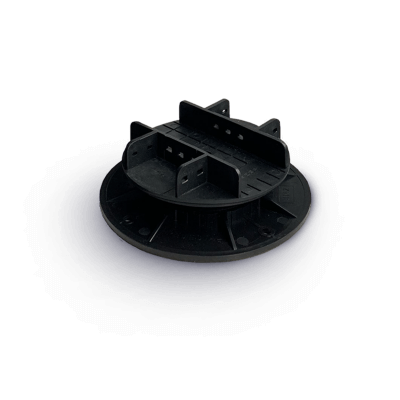 Adjustable Pedestal Supports 28-35mm£3.99inc VAT
Adjustable Pedestal Supports 28-35mm£3.99inc VAT
Per Unit -
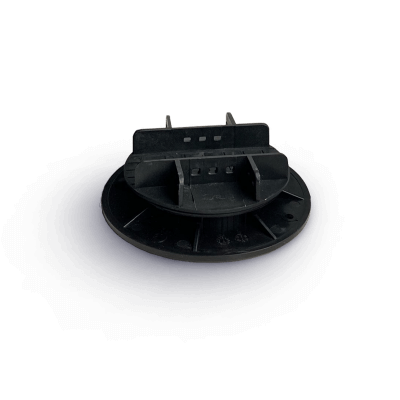 Adjustable Pedestal Supports 23-28mm£3.79inc VAT
Adjustable Pedestal Supports 23-28mm£3.79inc VAT
Per Unit
Step 1: Level the pedestals
Construct all adjustable pedestals. Make sure each pedestal is leveled correctly to the desired height before moving onto the next step.
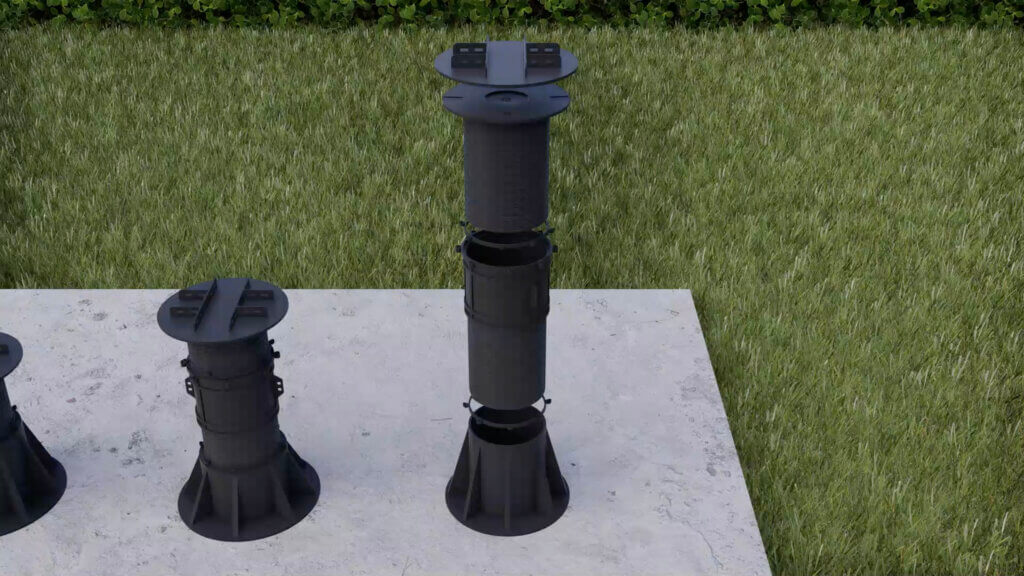
Step 2: Create a drainage slope
Ensure the ground allows for a slope of 10mm per metre towards a designated drainage area. This slope will allow water to flow easily and prevent pooling on top of the completed deck.
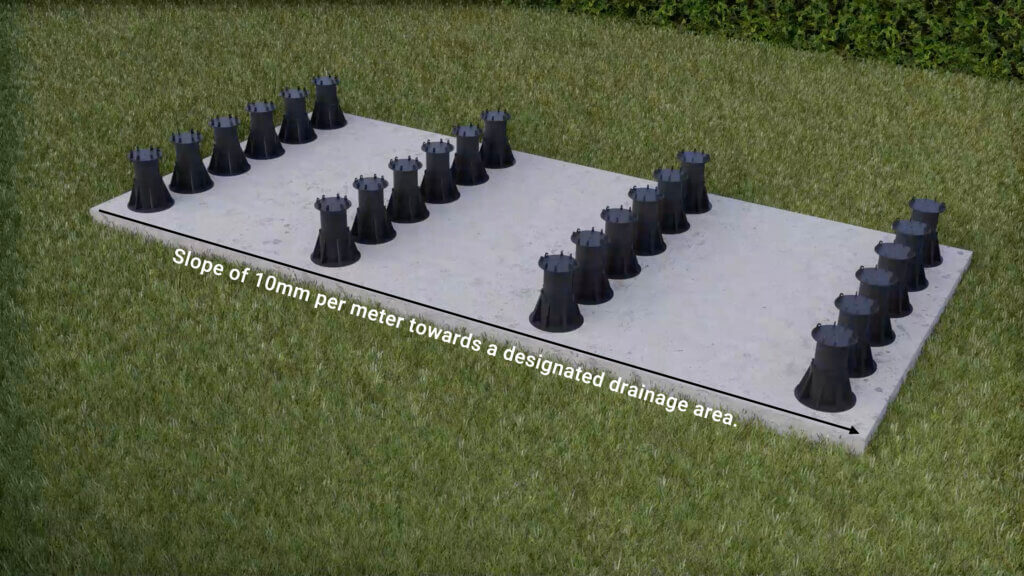
Step 3: Space pedestals with aluminium joists
Pedestals should be spaced 1200mm apart to support the length of the aluminium joist. Therefore, each aluminium joist will have 4 pedestals supporting it across the 3.6m length to provide support.
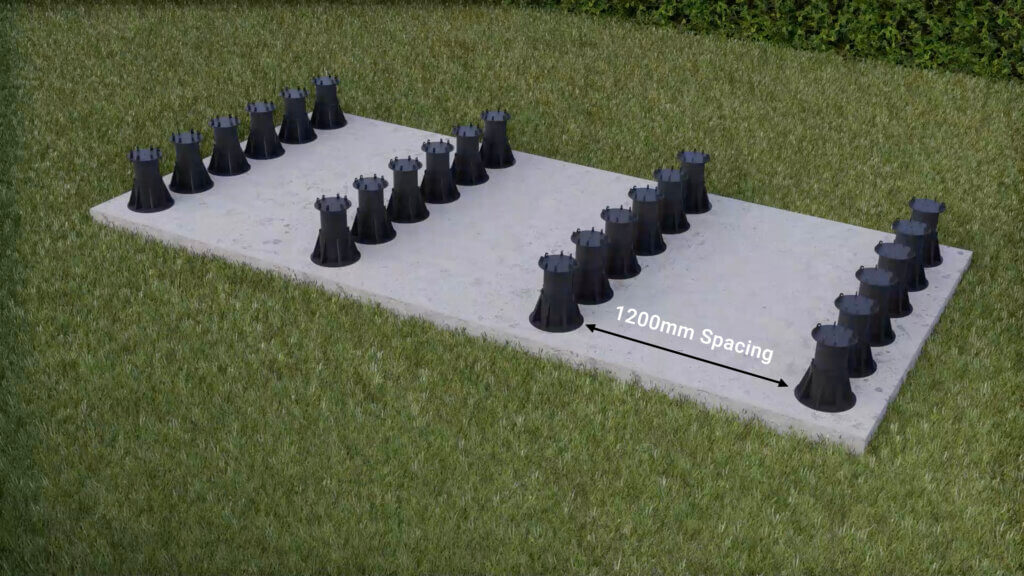
Step 4: Space pedestals for the decking boards
Place adjacent Pedestals spaced at 300mm apart, to support the length of the composite decking board. The tighter space can even support the decking, preventing warping over time.
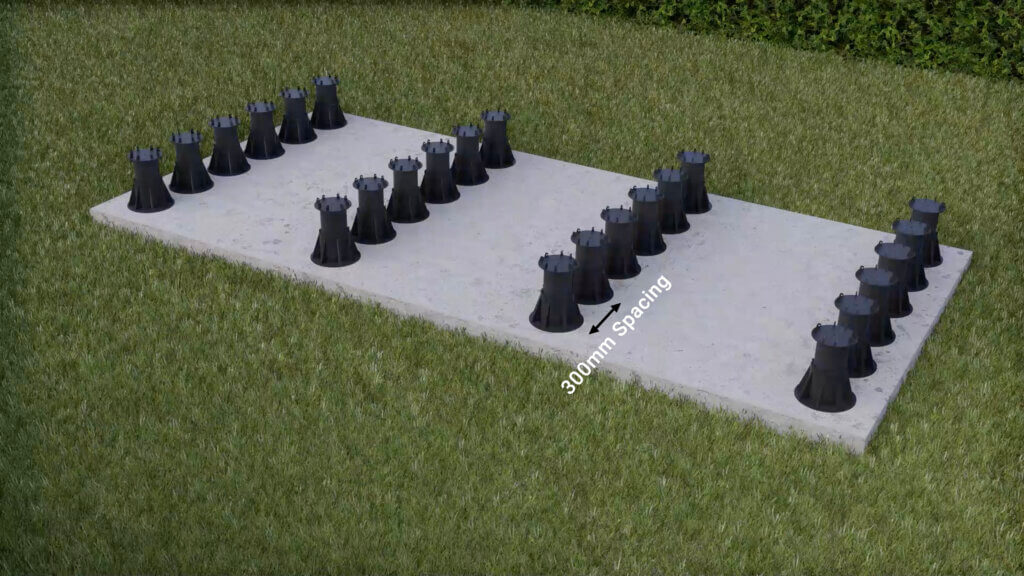
Aluminium Joists Installation
Aluminium joists are perfect for raising decks with pedestals due to their exceptional strength. This section will help you learn how to securely attach vertical joist pieces to the framework using metal brackets and rivets, creating a sturdy foundation for your decking project.
-
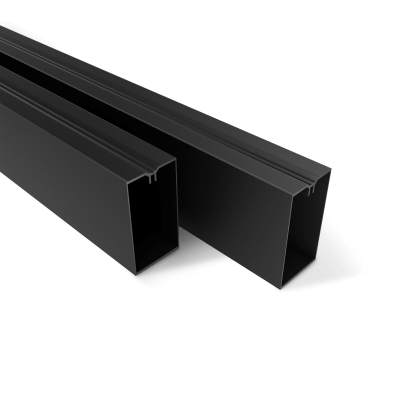 Aluminium Joist 3.6m£24.99inc VAT
Aluminium Joist 3.6m£24.99inc VAT
Per 3.6m
Step 1: Position aluminium joists
Position the aluminium joists precisely at 300mm centres across your decking area. Make sure each joist is supported by pedestals spaced 1200mm apart.
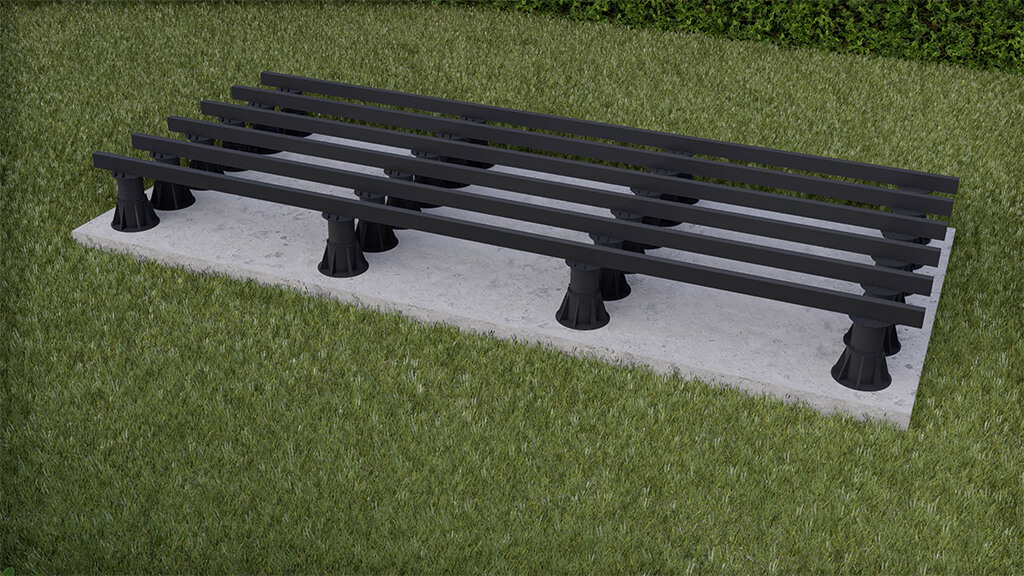
Step 2: Reinforce the perimeter
Along the perimeter, integrate additional joists around the perimeter using joist hangers. Ensure a strong attachment by fastening them with rivets for a stronger and more durable attachment.
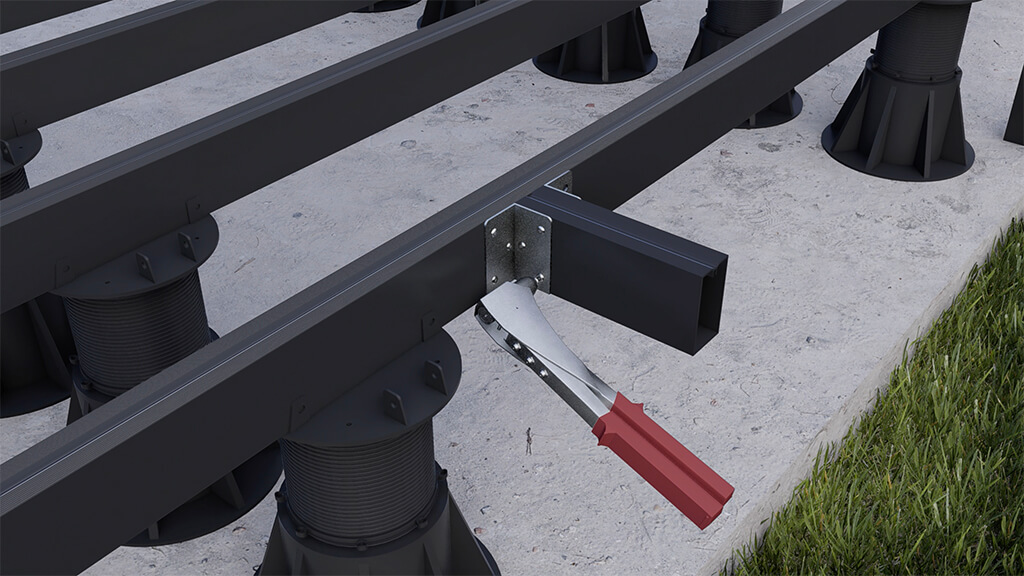
Step 3: Attach the vertical joist support
Attach vertical joist pieces securely to the existing framework using metal brackets and rivets for additional support.
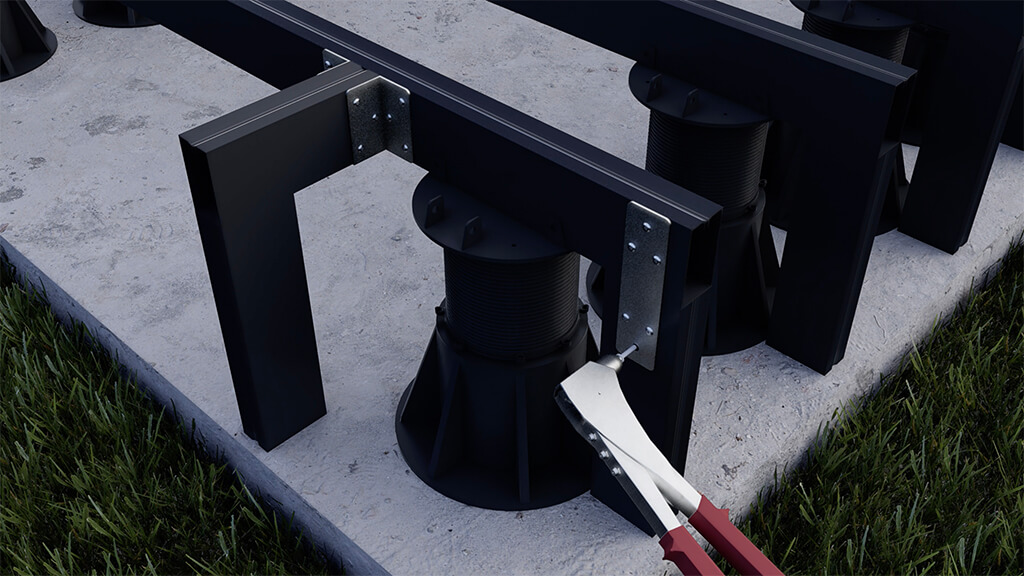
How to Install Composite Decking Accessories
The completion of most composite decks often entails the addition of composite decking accessories like skirting/fascia boards, edging/corner trims, or bullnose edges. Edging/corner trims are used when a quicker and easier installation is required.
Edging/Corner Trim Installation
Installing edging and corner trim for composite decking can improve your deck’s look and durability. Follow these steps, covering surface preparation, adhesive application, and securing the trim.
-
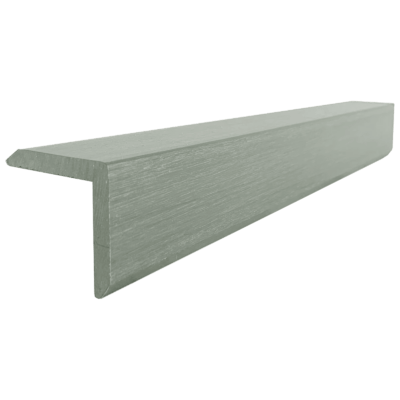 Edging Trim – Sage Green 2.2m£8.99inc VAT
Edging Trim – Sage Green 2.2m£8.99inc VAT -
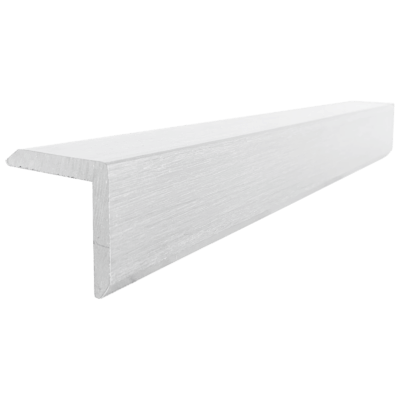 Edging Trim – White Onyx 2.2m£8.99inc VAT
Edging Trim – White Onyx 2.2m£8.99inc VAT -
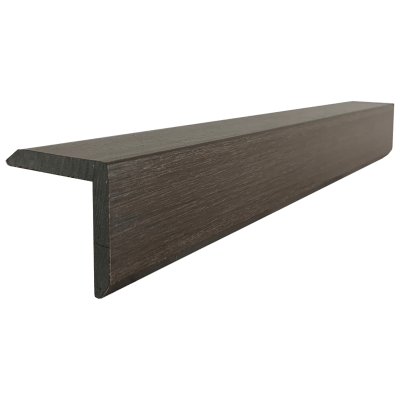 Edging Trim – Walnut 2.2m£8.99inc VAT
Edging Trim – Walnut 2.2m£8.99inc VAT -
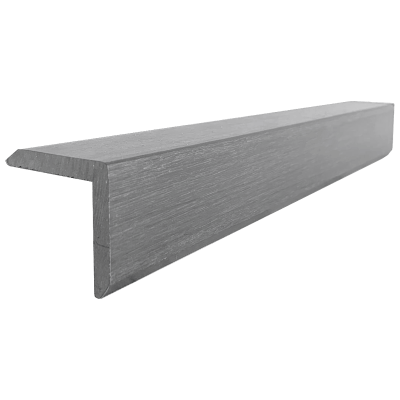 Edging Trim – Pearl 2.2m£8.99inc VAT
Edging Trim – Pearl 2.2m£8.99inc VAT -
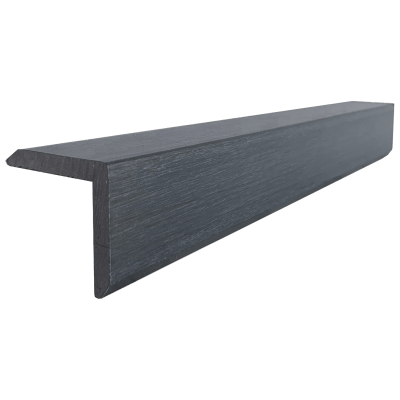 Edging Trim – Anthracite 2.2m£8.99inc VAT
Edging Trim – Anthracite 2.2m£8.99inc VAT -
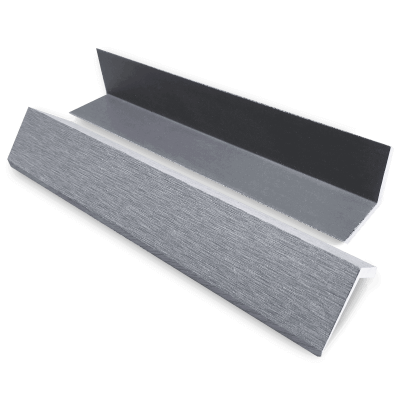 Light Grey Corner Trim – Stone 2.2m£7.99inc VAT
Light Grey Corner Trim – Stone 2.2m£7.99inc VAT
Per length -
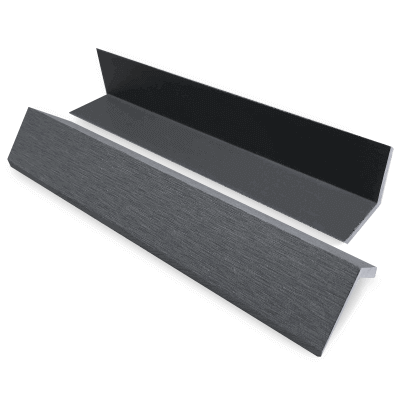 Grey Corner Trim – Ash 2.2m£7.99inc VAT
Grey Corner Trim – Ash 2.2m£7.99inc VAT
Per length -
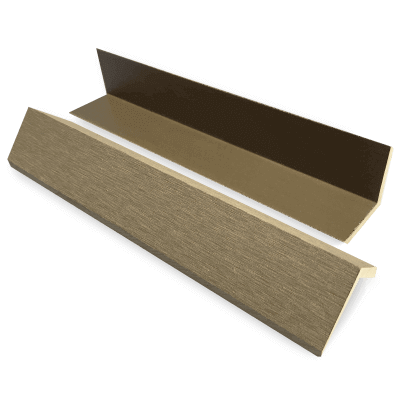 Corner Trim – Savanna 2.2m£7.99inc VAT
Corner Trim – Savanna 2.2m£7.99inc VAT
Per length -
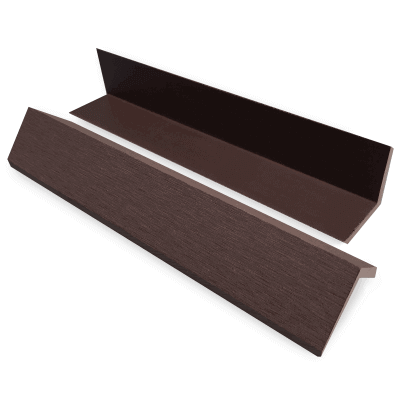 Brown Corner Trim – Mocha 2.2m£7.99inc VAT
Brown Corner Trim – Mocha 2.2m£7.99inc VAT
Per length -
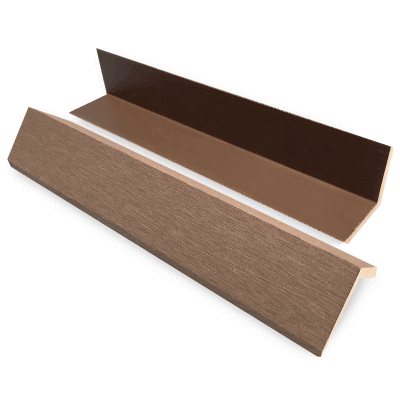 Teak Corner Trim – Amber 2.2m£7.99inc VAT
Teak Corner Trim – Amber 2.2m£7.99inc VAT
Per length -
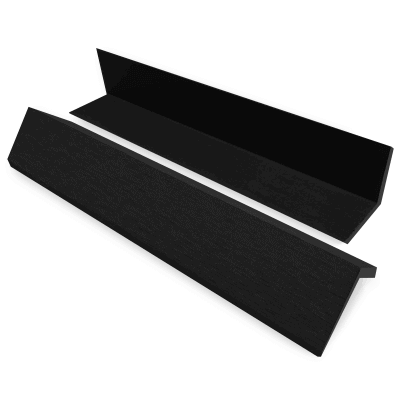 Black Corner Trim – Graphite 2.2m£7.99inc VAT
Black Corner Trim – Graphite 2.2m£7.99inc VAT
Per length
Step 1: Prepare the edging trims
To achieve precise corners and joints, you can mitre the edging trims using a circular, chop, or mitre saw. This will ensure a clean and professional finish to your installation.
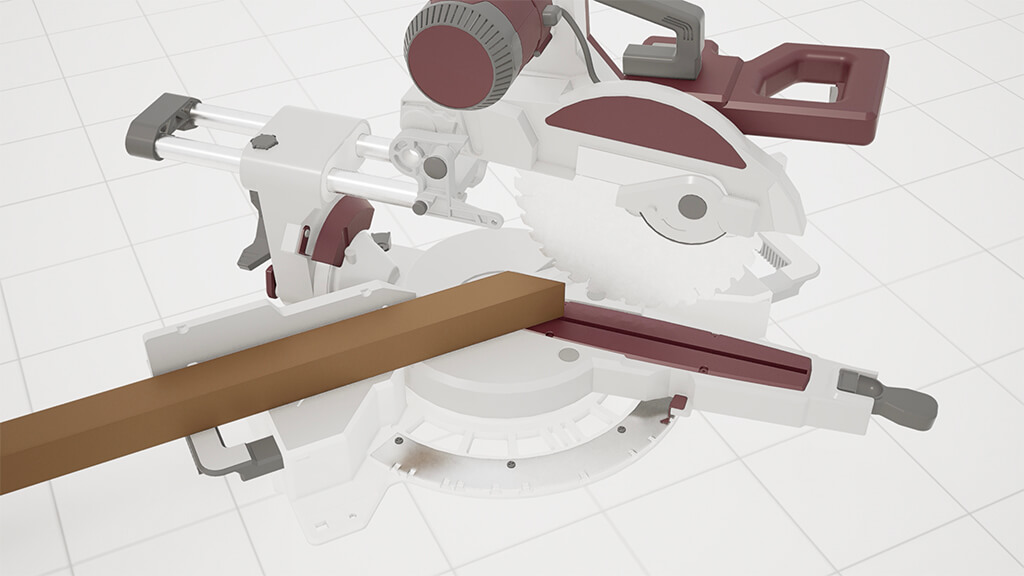
Step 2: Apply adhesive
Before applying adhesive, make sure the designated surface area is completely free from debris and clean. Position the edging trim into place, ensuring it adheres firmly to the adhesive. Leave a space of 4-6mm where two edging trims meet to allow for expansion.
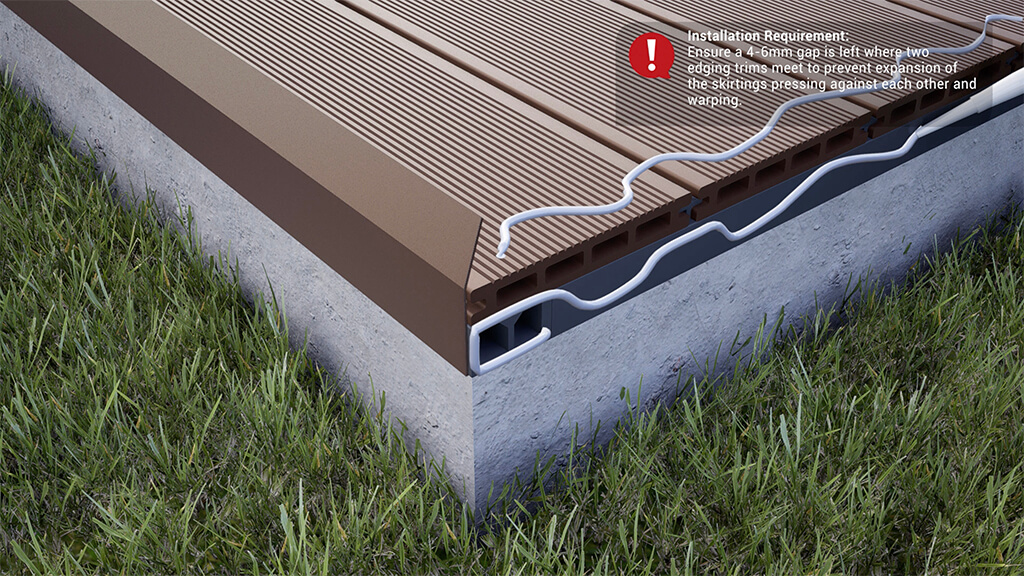
Step 3: Pre-drill for the screws
(alternative fixture method)
When using screws, it’s essential to pre-drill the edging trim to prevent any damage to the product during installation.
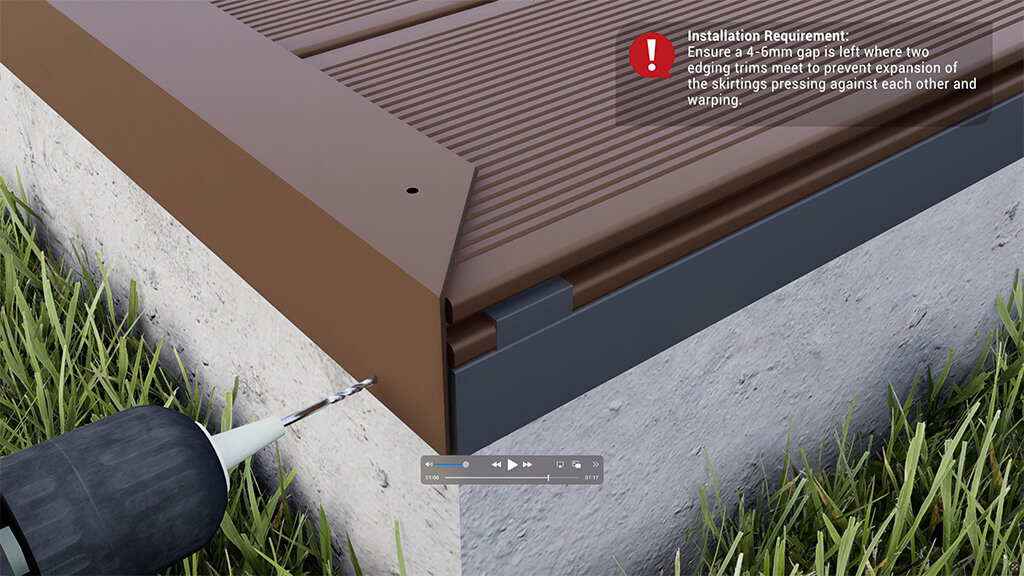
Step 4: Secure with screws
(alternative fixture method)
Carefully screw the edging trim into place with the screws, making sure it is securely fastened and ensuring you maintain a 4-6mm gap where two edging trims meet to allow for expansion.
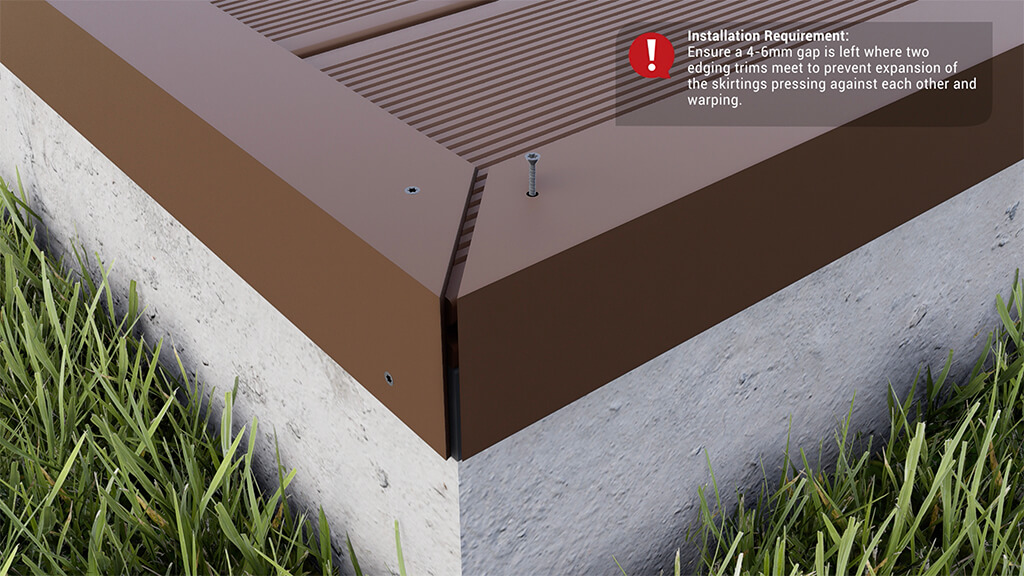
Skirting / Fascia Board Installation
Installing the fascia or skirting boards on composite decking is essential to finishing the deck’s vertical sides with precision. From cutting the composite decking to securing the fascia boards, achieve a seamless and polished look that enhances both aesthetics and durability with the steps below.
-
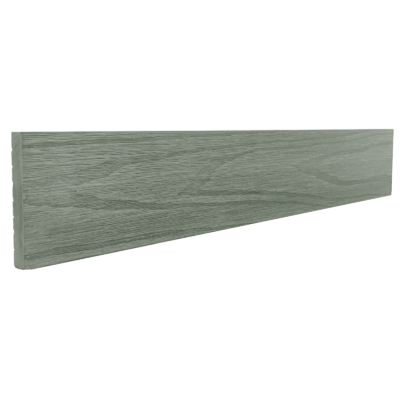 Skirting Board – Sage Green 2.2m£10.99inc VAT
Skirting Board – Sage Green 2.2m£10.99inc VAT -
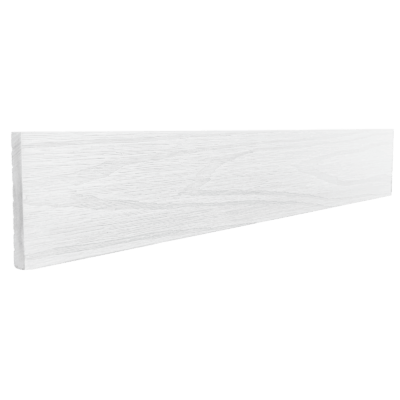 Skirting Board – White Onyx 2.2m£10.99inc VAT
Skirting Board – White Onyx 2.2m£10.99inc VAT -
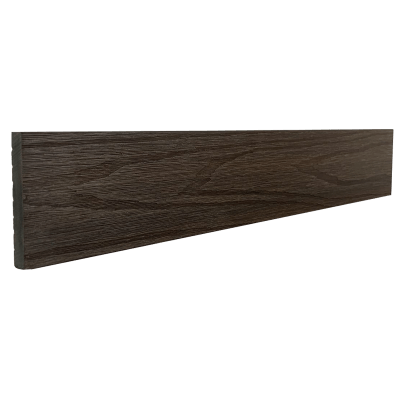 Skirting Board – Walnut 2.2m£10.99inc VAT
Skirting Board – Walnut 2.2m£10.99inc VAT -
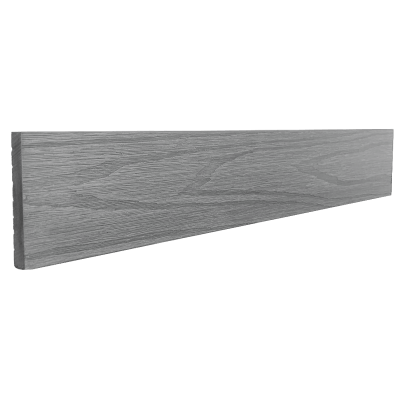 Skirting Board – Pearl 2.2m£10.99inc VAT
Skirting Board – Pearl 2.2m£10.99inc VAT -
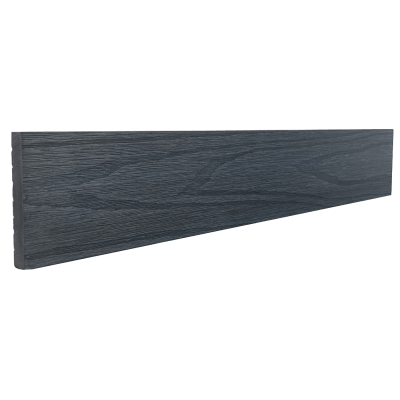 Skirting Board – Anthracite 2.2m£10.99inc VAT
Skirting Board – Anthracite 2.2m£10.99inc VAT -
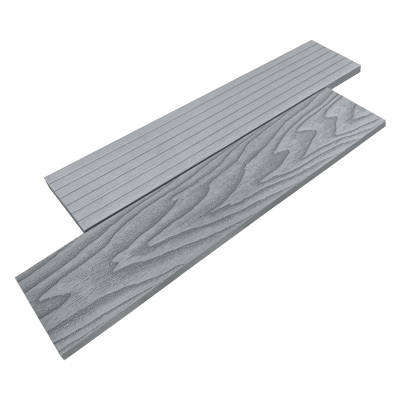 Light Grey Fascia Board – Stone 2.2m£9.99inc VAT
Light Grey Fascia Board – Stone 2.2m£9.99inc VAT
Per length -
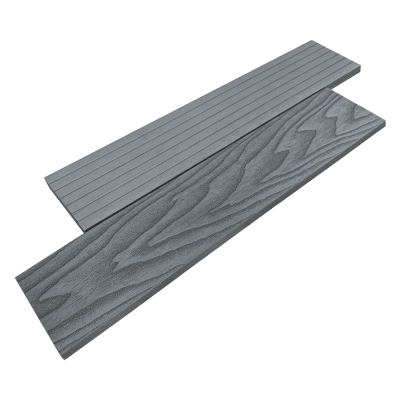 Grey Fascia Board – Ash 2.2m£9.99inc VAT
Grey Fascia Board – Ash 2.2m£9.99inc VAT
Per length -
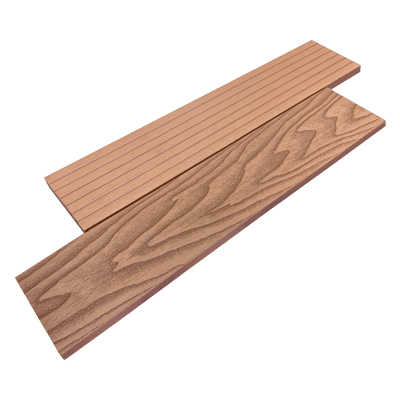 Teak Fascia Board – Amber 2.2m£9.99inc VAT
Teak Fascia Board – Amber 2.2m£9.99inc VAT
Per length -
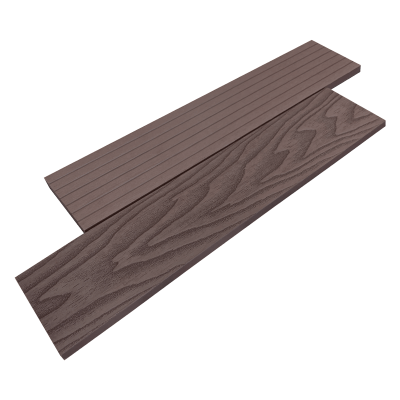 Brown Fascia Board – Mocha 2.2m£9.99inc VAT
Brown Fascia Board – Mocha 2.2m£9.99inc VAT
Per length -
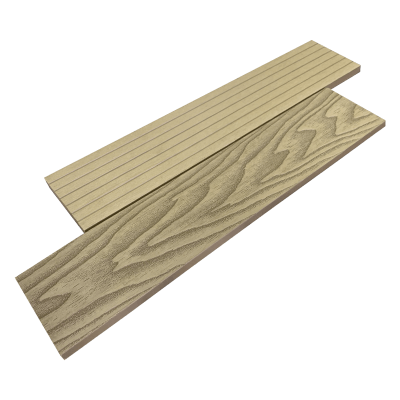 Fascia Board – Savanna 2.2m£9.99inc VAT
Fascia Board – Savanna 2.2m£9.99inc VAT
Per length -
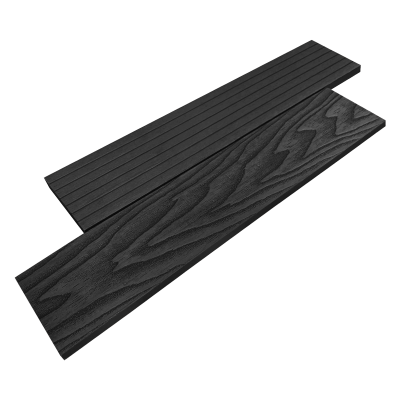 Black Fascia Board – Graphite 2.2m£9.99inc VAT
Black Fascia Board – Graphite 2.2m£9.99inc VAT
Per length
Step 1: Mitre for precise corners
Achieve precise corners and joints to mitre the skirting boards by using a chop or mitre saw, ensuring a clean and professional finish to your installation.
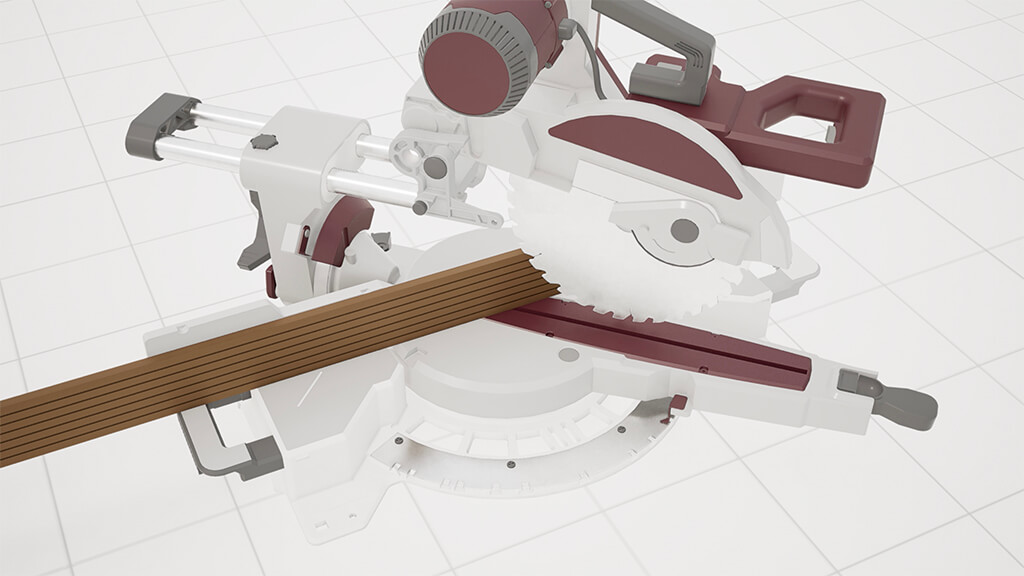
Step 2: Apply adhesive
Before applying adhesive, thoroughly clean the surface of debris and ensure it’s clean. Apply outdoor grab adhesive to the designated area and position the skirting board firmly onto it.
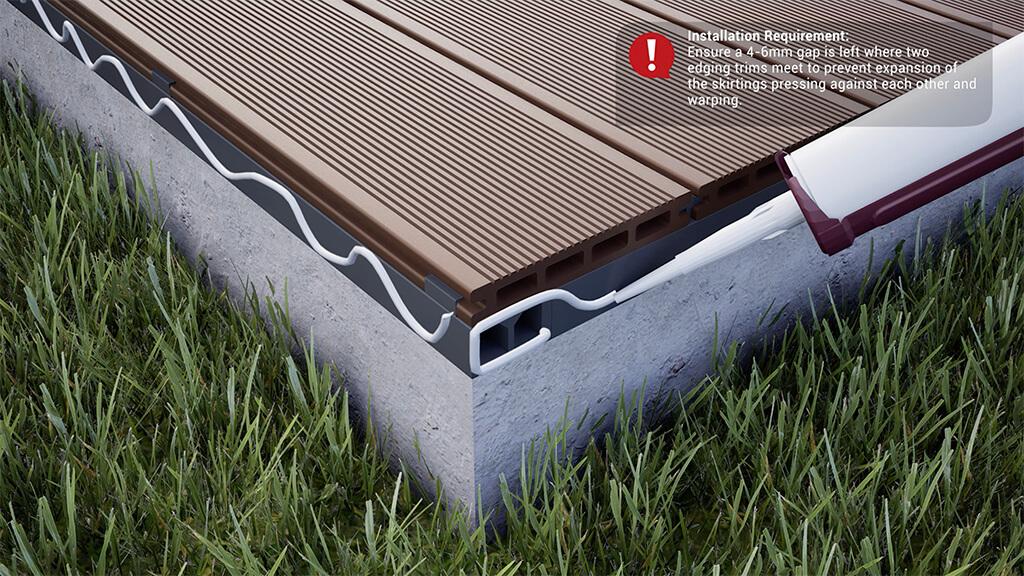
Step 3: Leave a gap for expansion
Leave a gap of 4-6mm where two skirting boards meet to accommodate expansion.

Step 4: Pre-drill for screw fixing
(alternative fixture method)
Pre-drill the skirting board before using screws to prevent any damage during the installation of your composite decking.
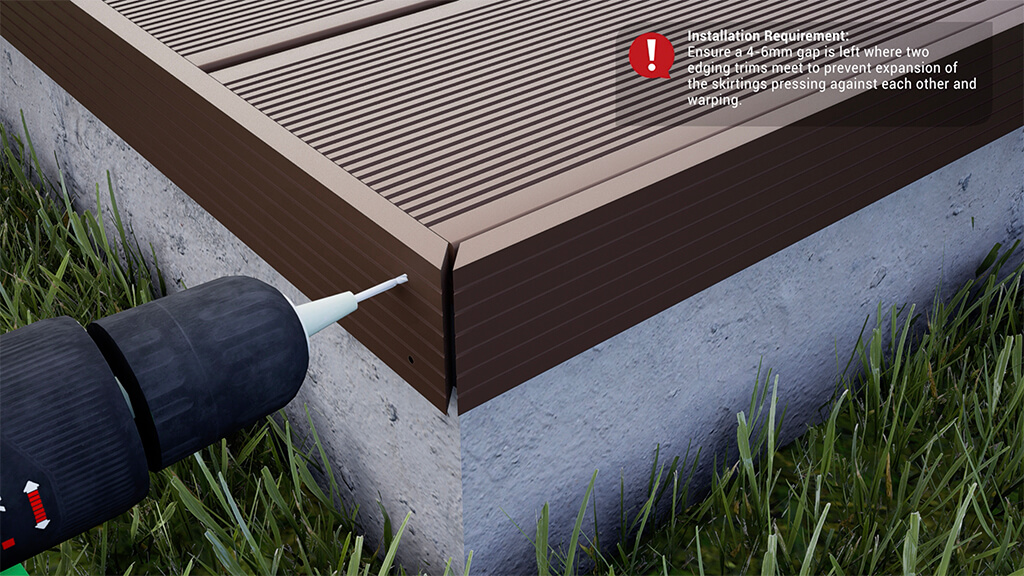
Step 5: Secure the screws
(alternative fixture method)
Securely fasten the skirting board into place with screws, maintaining a 4-6mm gap where two skirting boards meet to allow for expansion.
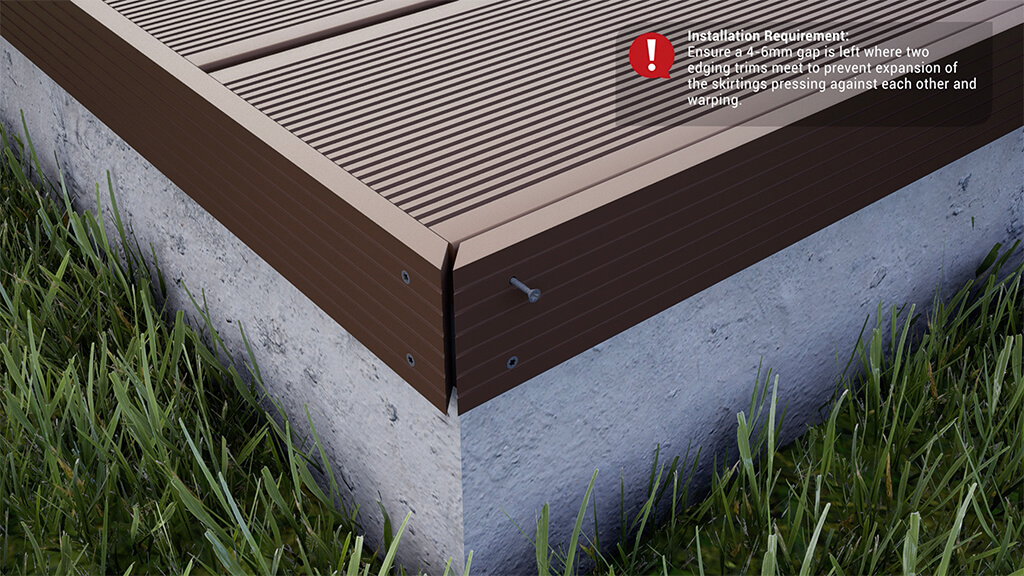
Bullnose Edge Installation
Install a 90-degree corner trim for composite decking with bullnose edge installation. Follow the steps below to understand what the best method of securing the trim to improve your deck’s look and durability.
-
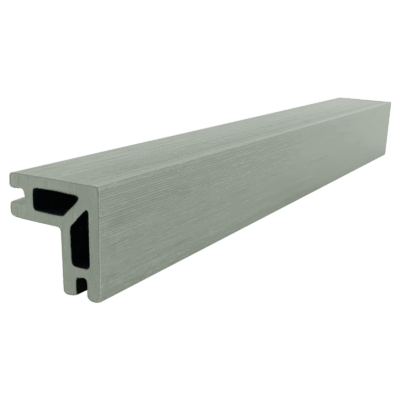 Bullnose Edge – Sage Green 2.2m£16.99inc VAT
Bullnose Edge – Sage Green 2.2m£16.99inc VAT -
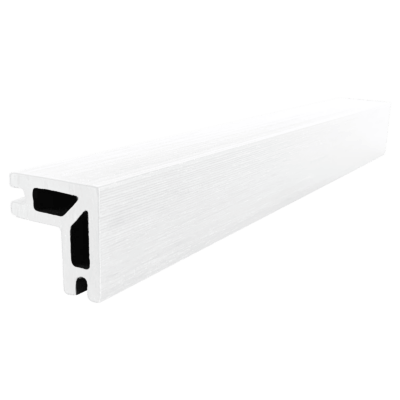 Bullnose Edge – White Onyx 2.2m£16.99inc VAT
Bullnose Edge – White Onyx 2.2m£16.99inc VAT -
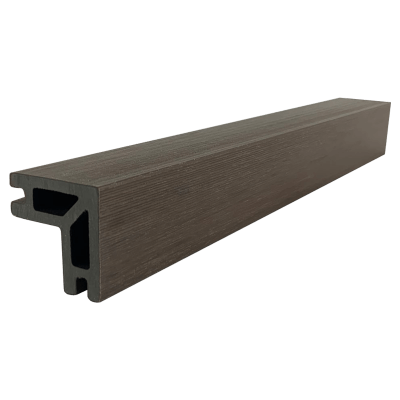 Bullnose Edge – Walnut 2.2m£16.99inc VAT
Bullnose Edge – Walnut 2.2m£16.99inc VAT -
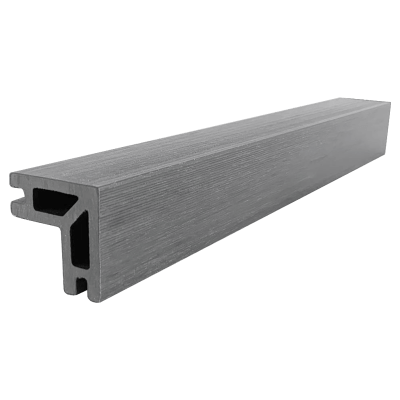 Bullnose Edge – Pearl 2.2m£16.99inc VAT
Bullnose Edge – Pearl 2.2m£16.99inc VAT -
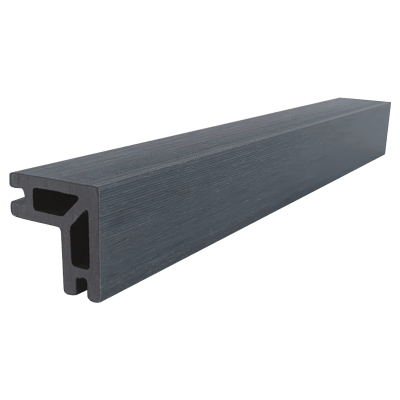 Bullnose Edge – Anthracite 2.2m£16.99inc VAT
Bullnose Edge – Anthracite 2.2m£16.99inc VAT -
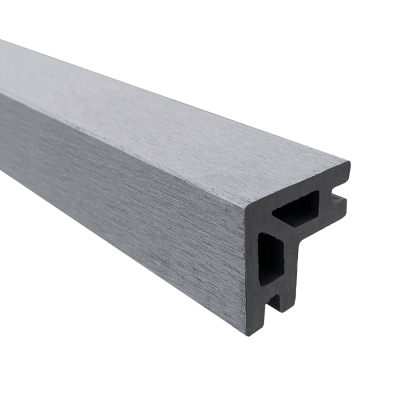 Light Grey Bullnose Edge – Stone 2.2m£14.99inc VAT
Light Grey Bullnose Edge – Stone 2.2m£14.99inc VAT
Per length -
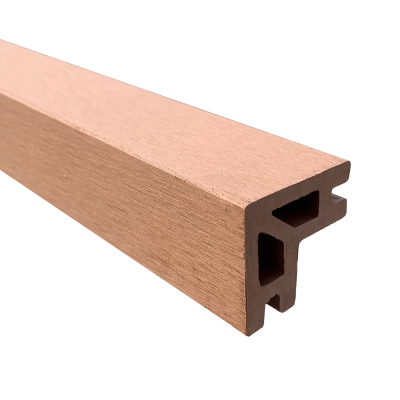 Teak Bullnose Edge – Amber 2.2m£14.99inc VAT
Teak Bullnose Edge – Amber 2.2m£14.99inc VAT
Per length -
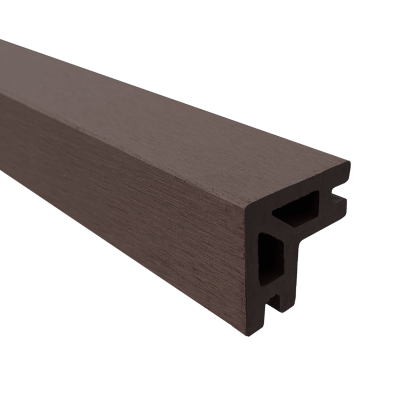 Brown Bullnose Edge – Mocha 2.2m£14.99inc VAT
Brown Bullnose Edge – Mocha 2.2m£14.99inc VAT
Per length -
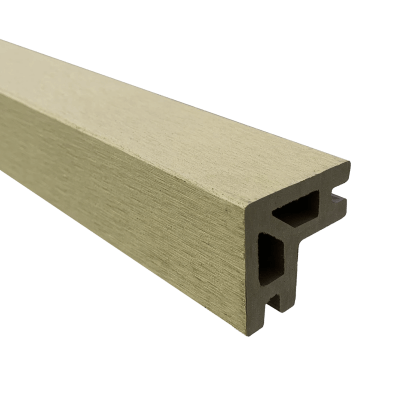 Bullnose Edge – Savanna 2.2m£14.99inc VAT
Bullnose Edge – Savanna 2.2m£14.99inc VAT
Per length -
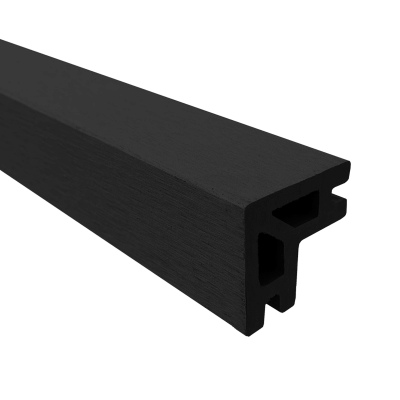 Black Bullnose Edge – Graphite 2.2m£14.99inc VAT
Black Bullnose Edge – Graphite 2.2m£14.99inc VAT
Per length -
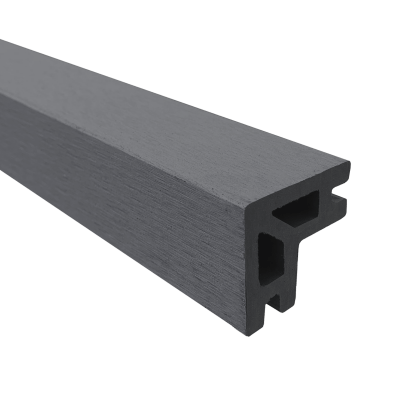 Grey Bullnose Edge – Ash 2.2m£14.99inc VAT
Grey Bullnose Edge – Ash 2.2m£14.99inc VAT
Per length
Step 1: Attach fixing clips
Attach the 3mm or 6mm fixing clips to each joist.
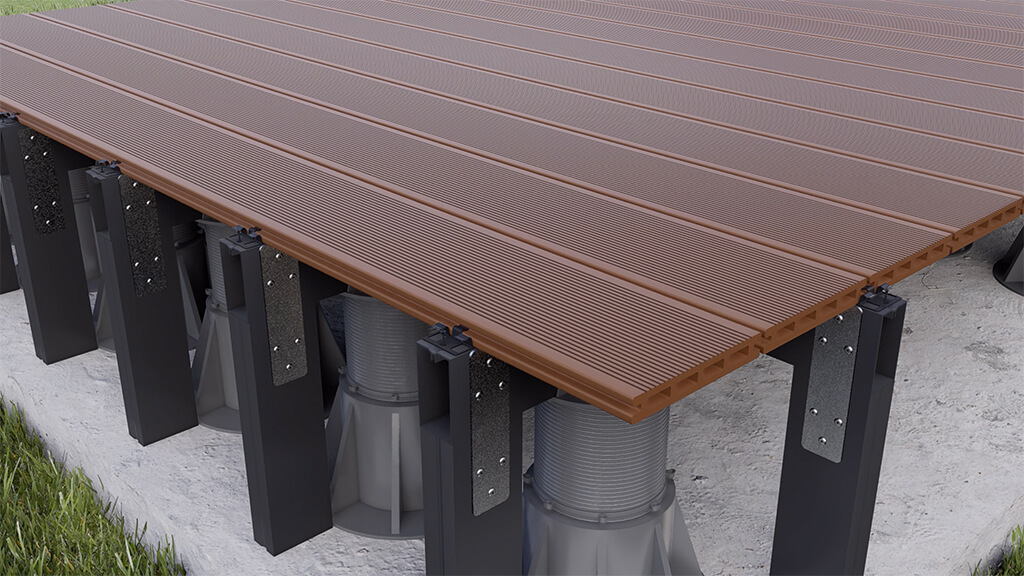
Step 2: Apply adhesive
Apply an adhesive on the edge of the joist where the bullnose will be installed.
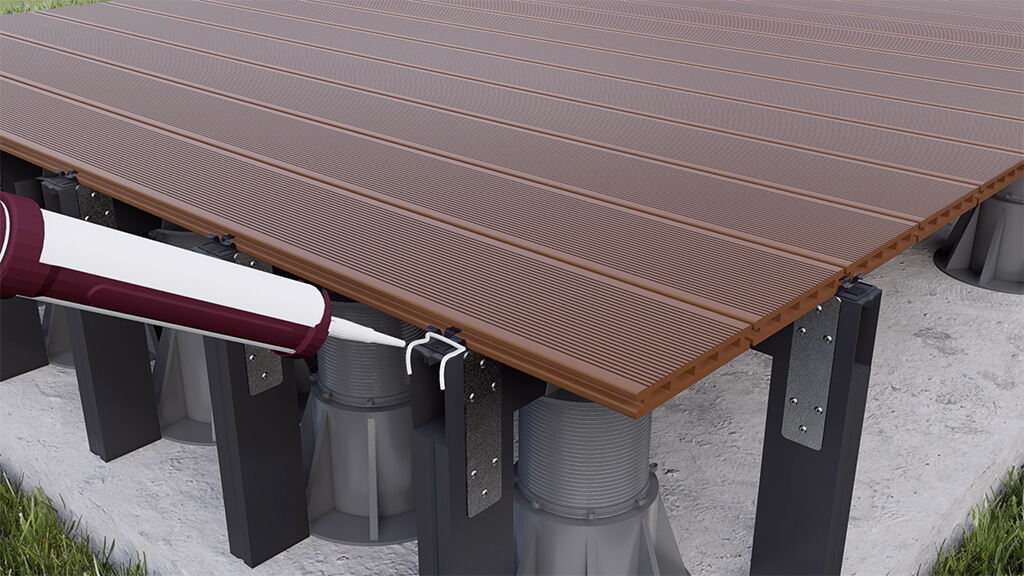
Step 3: Measure and cut the bullnose trim
Measure and cut the bullnose trim to the desired length mitering any corner joints at 90 degrees for a precise finish.

Step 4: Align and attach the bullnose trim
Once the fixings are attached, carefully align the bullnose trim with the edge of your project and press it firmly into place. Ensuring you work from one end of the bullnose to the other securing each clip as you move along the length.
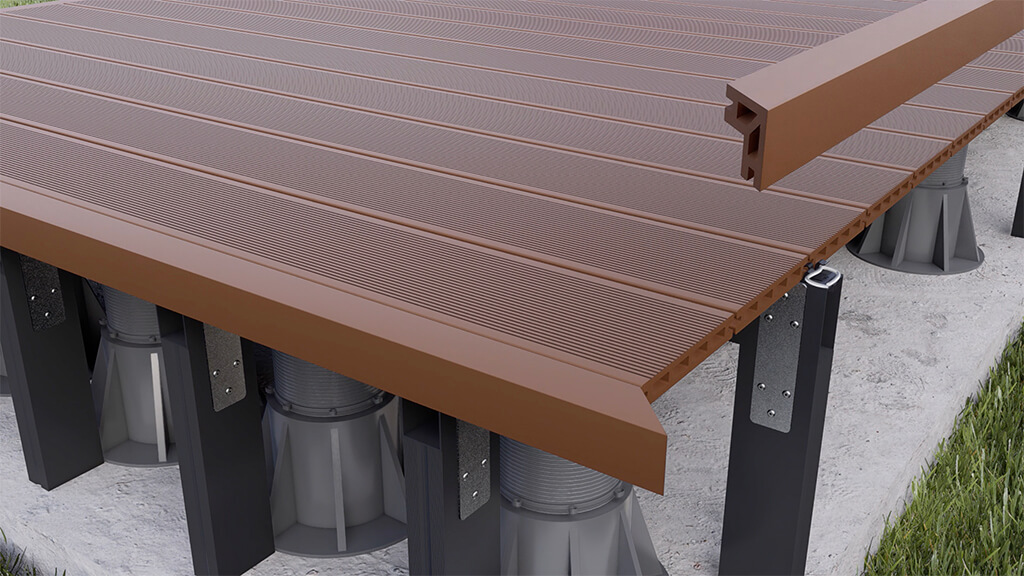
Step 5: Secure the bullnose trim
To ensure the bullnose is secured in place, secure a 3mm or 6mm clip to the underside of the bullnose edge and screw them into the joist to hold the bullnose in place.
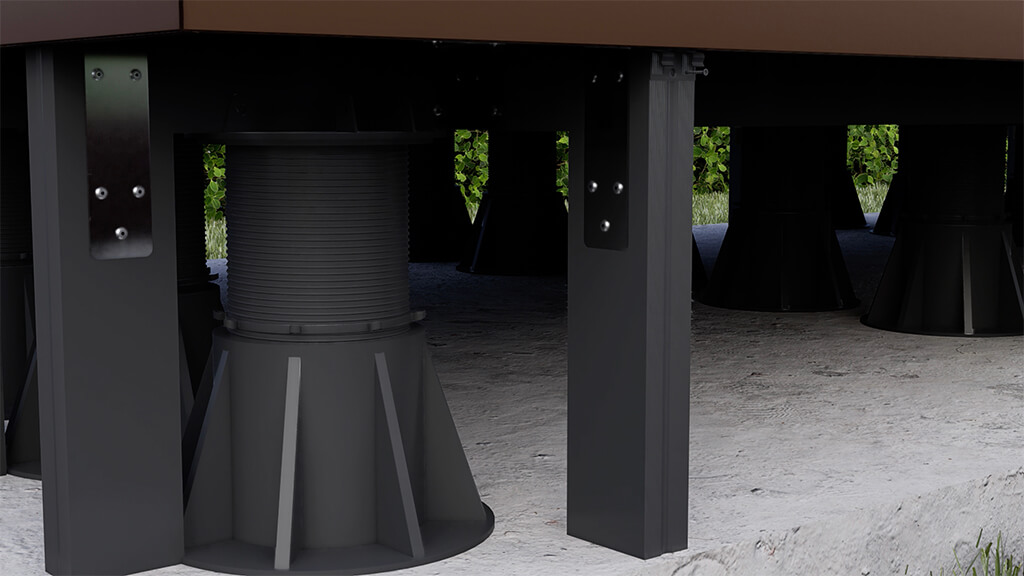
Step 6: Install the decking boards
Secure your next decking board vertically onto the fixing clip and repeat to create the face of the desired raised height of the deck. In this example image, only 2 decking boards are used for the height.
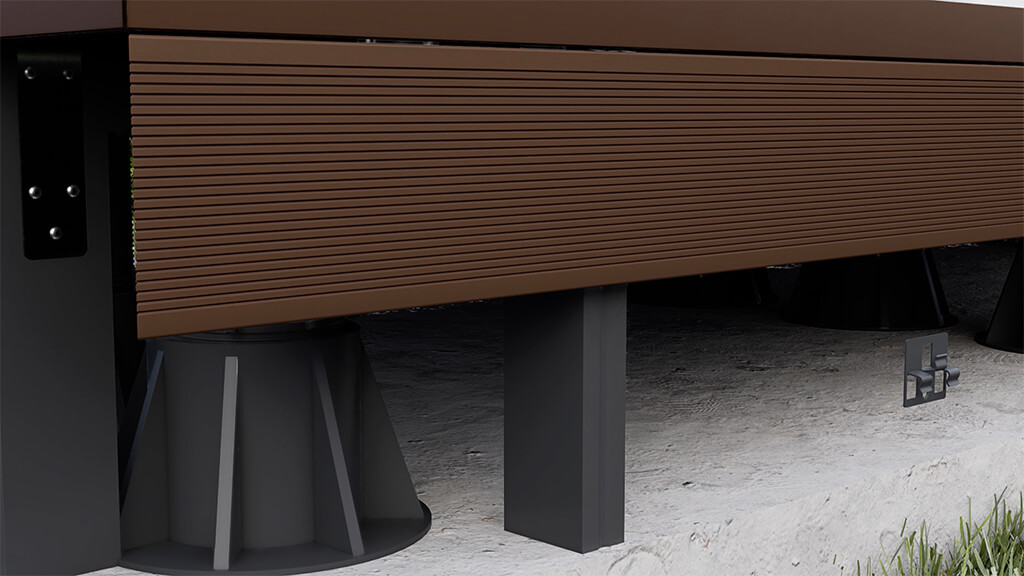
Step 7: Install a starter fixing
Install a starter fixing at the bottom of the vertical joist to fit the final boards in place.
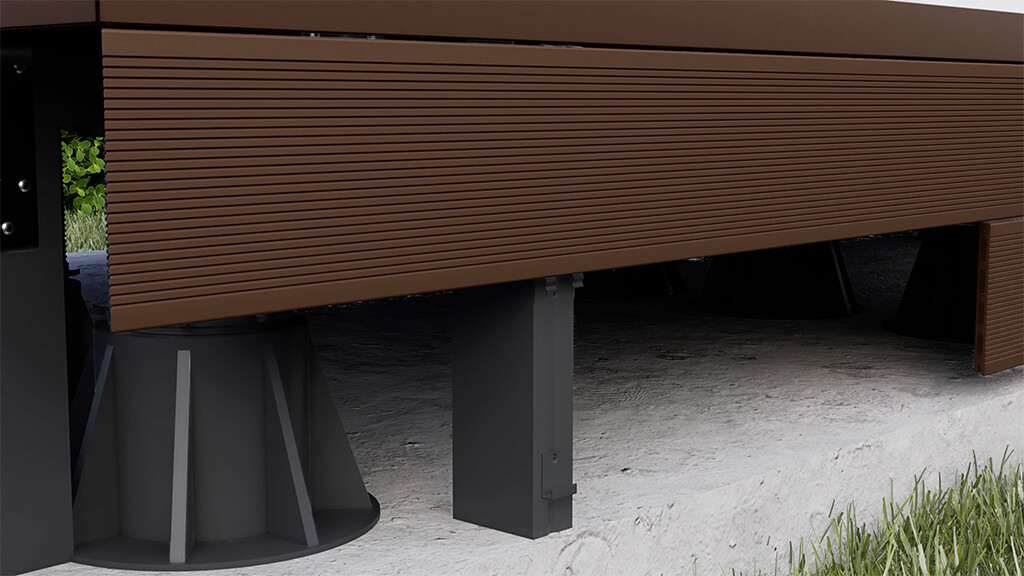
Step 8: Secure the final board
Slide and secure the final board between the 3mm or 6mm fixing and a starter fixing. Once in place, your composite decking is complete and ready to be used.
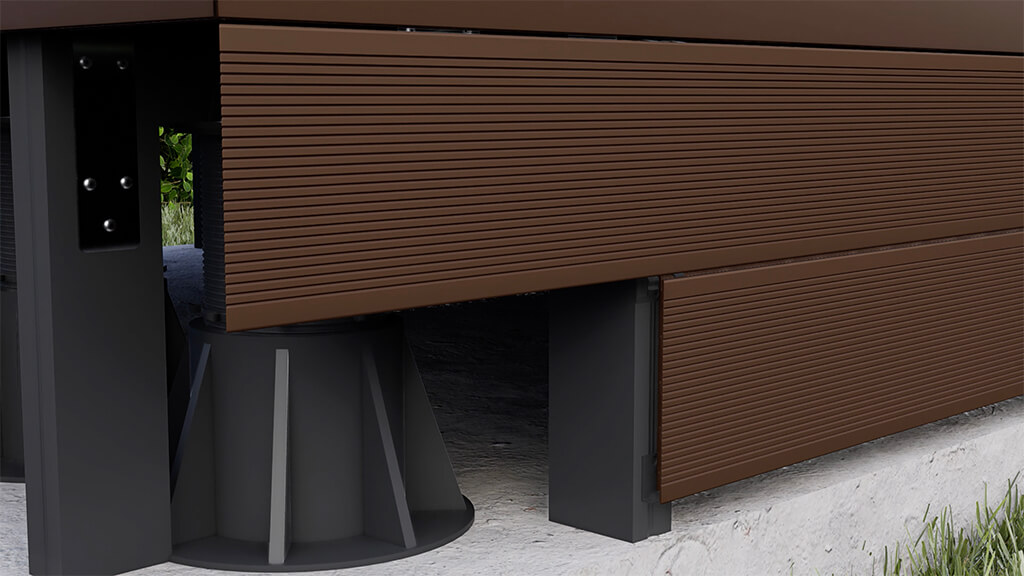
Install your composite decking with Dino Decking
Now you know how to install composite decking, it’s time to transform your garden. From fitting the decking, including the deck frame and accessories, DIY enthusiasts can now confidently fit a decking themselves.
At Dino Decking, we specialise in providing high-quality composite decking, offering premium products at an affordable rate. You can trust us to supply you with everything you need to create your dream outdoor space.
Order a sample pack from us, or start exploring all of our composite decking options today!
